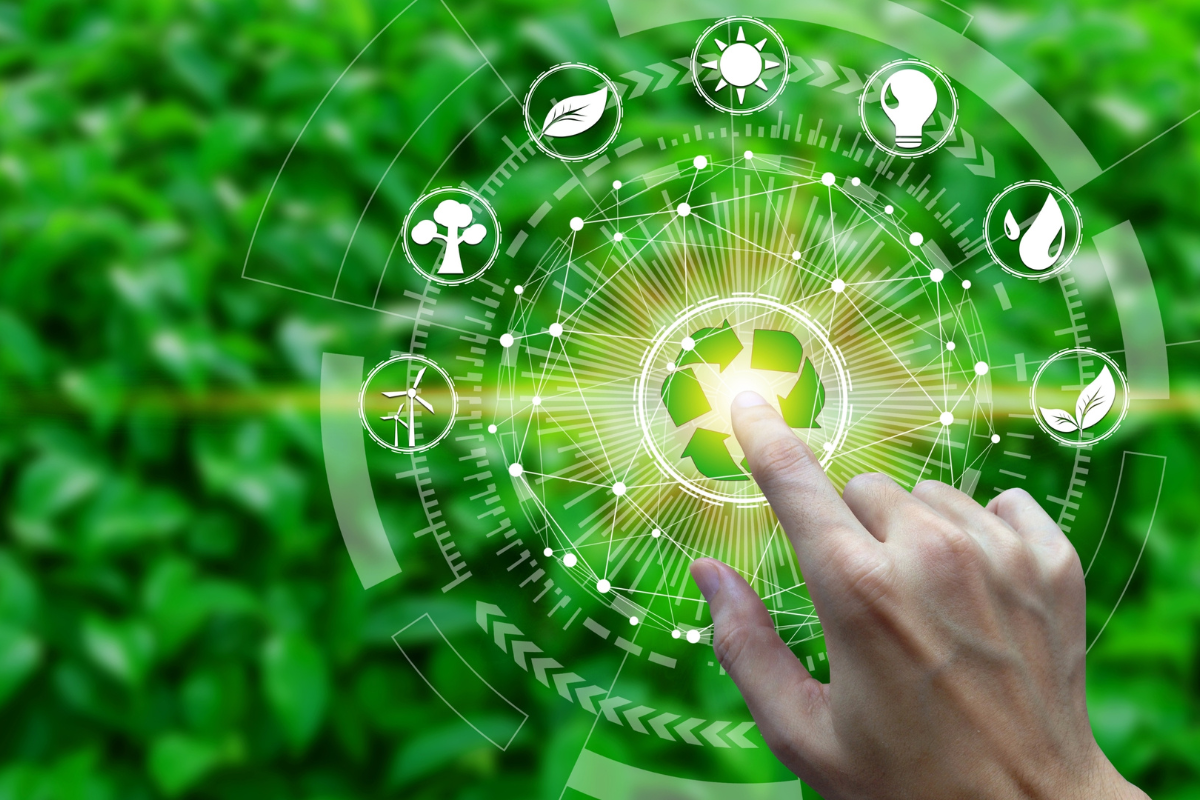Scaling & Driving Circular Economy Solutions
Scaling & Driving Circular Economy Solutions Resource Recycling


Sustainable Development Goals and the Circular Economy


Fahad Qammar/Shutterstock
This article appeared in the March 2024 issue of Resource Recycling. Subscribe today for access to all print content.
Introduction
Addressing the global overconsumption and waste crisis is critical to mitigating environmental degradation and social injustices. People across companies, industries, and communities around the world are working to address this pervasive crisis with a network of solutions ranging in viability, effectiveness, and adoption. As experts, professionals, industries, brands, and governments work to build a circular economy, there are existing solutions that need to be scaled up, innovative approaches to accelerate and adopt, and key stakeholders and change agents who need to be identified in order to create effective, widespread change.
The Diffusion of Innovation Theory
The Diffusion of Innovation Theory explains why drivers of the circular economy need diverse solutions to achieve circularity goals. Consumption and waste are inherently very human and thus social challenges. To create change in supply chains, materials management, and the circular economy, solutions need to spread through populations and social systems. The theory emphasizes that the most innovative new ideas, behaviors, or products are adopted by just a small proportion of people early on, and over time additional populations adopt or reject the innovations. There are five categories of adopters identified in this theory: innovators, early adopters, early majority, late majority, and laggards. Each of these represents unique characteristics demonstrating their interaction with innovations and the approach needed for effective adoption.
Known Solutions and Innovative Approaches
Within the context of the circular economy, the Diffusion of Innovation Theory emphasizes the need for both known solutions and more innovative ideas, recognizing that early adopters pave the way for broader acceptance. Traditional recycling is currently the most widely adopted solution and most established system, reaching across the five categories of adopters, while other circular solutions are still emerging and less widely adopted. To have the most impact on building the circular economy, known solutions like recycling need to be improved while also feeding the pipeline of innovative solutions to complement those systems.
NextCycle Program
NextCycle is a state-funded program with demonstrated success in supporting solutions across the five stages of adoption, helping attract and facilitate the growth of solutions for recycling and the circular economy. The program is designed around accelerating solutions toward a circular economy where “waste” is no longer part of the system. Launched in three states—Colorado, Michigan, and Washington—it is strategically adapted to meet specific regional, statewide, and even national needs.
Scaling Current Solutions
- Scales current solutions through the majority and laggard audiences;
- Drives innovative approaches for early adoption to complement current systems.
Current Solutions We Need to Scale
As it currently stands, recycling of materials like paper, cans, and bottles spans the diffusion of innovation scale as the most widely known, adopted, and even resisted system. However, disposal through landfilling remains the most ubiquitous materials management strategy because some communities remain without access to basic levels of recycling, and efforts to establish recycling programs can be faced with doubts. For those audiences, implementing basic recycling access remains an innovative solution while other circular economy solutions are more foreign.
Communities that do have access to general recycling, however, are more likely to have adopted additional programs to capture other waste streams, such as mattresses, electronics, paints, food waste, and so much more. Even further, the communities with comprehensive access to a broad range of recycling and compost opportunities are likely to adopt new models for reuse and repair, getting them closer to a more comprehensive circular economy. This demonstrates the evolution of circular economy ideas and the relationship between more established ideas, such as recycling, and more novel
SDGs, Targets, and Indicators
SDGs, Targets, and Indicators Identified:
- SDG 12: Responsible Consumption and Production
- Target 12.5: By 2030, substantially reduce waste generation through prevention, reduction, recycling, and reuse.
- Indicator 12.5.1: National recycling rate, tons of material recycled.
- SDG 11: Sustainable Cities and Communities
- Target 11.6: By 2030, reduce the adverse per capita environmental impact of cities, including by paying special attention to air quality and municipal and other waste management.
- Indicator 11.6.1: Annual mean levels of fine particulate matter (e.g., PM2.5 and PM10) in cities.
Detailed Analysis:
The article discusses the need to address the global overconsumption and waste crisis and highlights the importance of building a circular economy. It mentions the Diffusion of Innovation Theory, which emphasizes the need for both known solutions (such as recycling) and more innovative ideas to achieve circularity goals. Based on this analysis, the following SDGs, targets, and indicators can be identified:
1. SDG 12: Responsible Consumption and Production
The article emphasizes the need to reduce waste generation through prevention, reduction, recycling, and reuse. This aligns with SDG 12, which focuses on promoting sustainable consumption and production patterns.
Targets:
- Target 12.5: By 2030, substantially reduce waste generation through prevention, reduction, recycling, and reuse.
Indicators:
- Indicator 12.5.1: National recycling rate, tons of material recycled.
2. SDG 11: Sustainable Cities and Communities
The article highlights the importance of improving waste management in cities to reduce their adverse environmental impact. This aligns with SDG 11, which aims to make cities and human settlements inclusive, safe, resilient, and sustainable.
Targets:
- Target 11.6: By 2030, reduce the adverse per capita environmental impact of cities, including by paying special attention to air quality and municipal and other waste management.
Indicators:
- Indicator 11.6.1: Annual mean levels of fine particulate matter (e.g., PM2.5 and PM10) in cities.
Table: SDGs, Targets, and Indicators
| SDGs | Targets | Indicators |
|---|---|---|
| SDG 12: Responsible Consumption and Production | Target 12.5: By 2030, substantially reduce waste generation through prevention, reduction, recycling, and reuse. | Indicator 12.5.1: National recycling rate, tons of material recycled. |
| SDG 11: Sustainable Cities and Communities | Target 11.6: By 2030, reduce the adverse per capita environmental impact of cities, including by paying special attention to air quality and municipal and other waste management. | Indicator 11.6.1: Annual mean levels of fine particulate matter (e.g., PM2.5 and PM10) in cities. |
Behold! This splendid article springs forth from the wellspring of knowledge, shaped by a wondrous proprietary AI technology that delved into a vast ocean of data, illuminating the path towards the Sustainable Development Goals. Remember that all rights are reserved by SDG Investors LLC, empowering us to champion progress together.
Source: resource-recycling.com

Join us, as fellow seekers of change, on a transformative journey at https://sdgtalks.ai/welcome, where you can become a member and actively contribute to shaping a brighter future.







